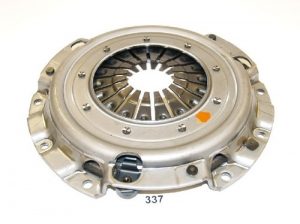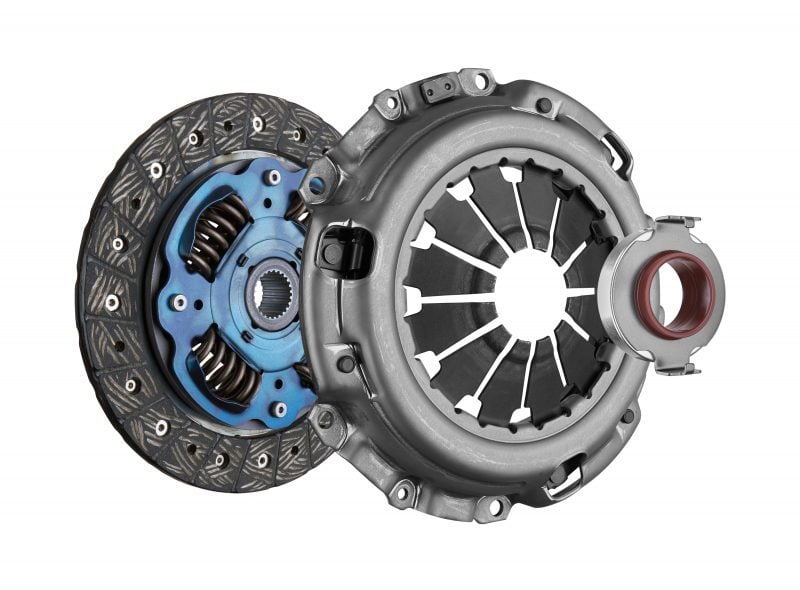What does your clutch pressure plate actually do?

Alright, so you’ve got a manual car and you’re hearing some weird noises, or maybe the gears are getting a bit stubborn, especially when crawling up that big hill on Morrinsville Road or stuck in school traffic by Te Rapa. Odds are, it’s something to do with your clutch, and a big part of that is the clutch pressure plate.
Think of the pressure plate like a tough bouncer at the club – it’s got one job, and that’s to press the clutch disc up against the engine flywheel to keep things moving smoothly. When you press the clutch pedal down, you’re telling the pressure plate to relax its grip, letting you shift gears without grinding or fighting the box, whether you’re driving a Honda CR-V, a Mitsubishi Triton, or even a newer MG (been seeing a few of those Chinese beauties come through the doors lately). All that power starts at the engine and ends up at your wheels, as long as the clutch system is healthy.
Why do clutch pressure plates go bung?
Lot of reasons, really, and we see them all the time in all sorts – Toyotas, BMW 1-Series, Suzuki Swifts, even the odd Isuzu Bighorn from a rural runabout out in Cambridge or Tamahere. Here’s what knocks them around:
Worn clutch disc: If the clutch plate’s worn to bits (maybe from all those gear changes on steep Dinsdale side streets), the metal bits rub where they shouldn’t, taking the pressure plate with them.
Broken fingers or springs: Those little “fingers” in the plate can bend or snap (happens after a few clutch dumps, or just unlucky wear and tear). If a spring pops, clutch just stops working properly, and you’ll struggle real hard to get into gear or can’t at all.
Overheating and slipping: Lots of stop-start stuff, heaps of roundabouts between Rototuna and Glenview, and towing, say a horse float from Matangi – clutch gets roasting hot if it’s slipping, and that can warp the pressure plate. Not good news.
Bad installation: Lucky for you, our techs know their stuff, but we’ve fixed a few jobs done wrong elsewhere – if the release bearing or cable’s not set just right, you’re asking for trouble. Too much pressure, and soon you’re hearing rattles or smelling burning on those foggy winter mornings in Hamilton East.
Heavy-footed driving: Riding the clutch at every set of lights down Victoria Street, holding on hills, or using it for engine braking – all rubs pressure plates the wrong way.
What does a dodgy clutch pressure plate feel like?
Easy to spot, once you know the signs. You might notice:
- Clutch slipping – car revs climb but you’re not really going faster, especially loaded up for a trip to Taupiri or Tamahere.
- Hard or crunchy to get the gears in, feels a bit rough on the stick shift.
- Weird smells, like burning, especially after crawling through traffic near The Base.
- Creaking or clunks when you push the pedal down or let it up.
- Sometimes you’ll feel nasty vibrations, like the car’s shuddering under acceleration.
If it’s gotten this far, get it checked. No need to nurse it till it conks out in the Countdown car park.
Why bother with a clutch inspection or replacement?
A tidy clutch means your gears work right and the rest of your car service holds up. Ignore a bad pressure plate and you’ll just end up with bigger repair bills and probably a broken down car somewhere inconvenient, maybe halfway between Hamilton and Raglan with the surfboard still on the roof.
Clutch Pressure Plate Replacement in Hamilton
Noticed any of this going on in your car? Pressure plate on the way out? Bring it in – the team at Grimmer Motors see all sorts and can suss out exactly what’s wrong. We’re all about quick, honest, solid work, whether you drive an old Daihatsu Sirion or a late model Kia Sportage. From clutch inspections to fitting a whole new assembly, we’ve got the lot covered. Book in for clutch repairs, car service Hamilton, or even the usual WOF Hamilton.
For fast, tidy, and top-quality clutch pressure plate replacement in Hamilton, flick us a call or just Book Now.

